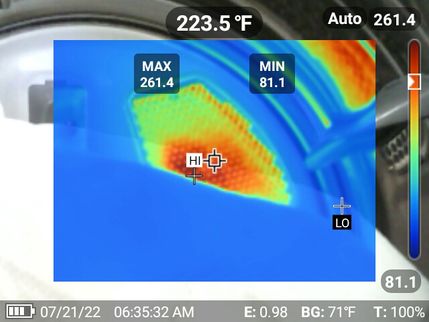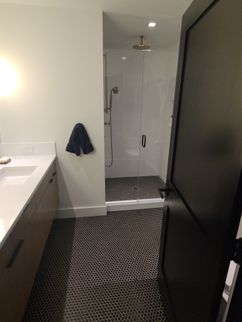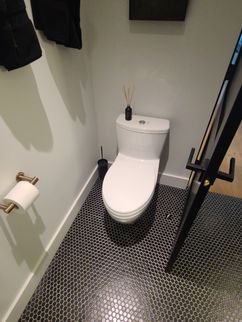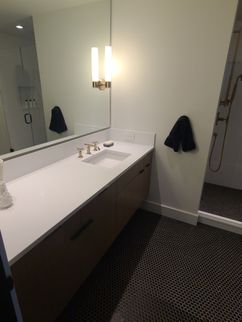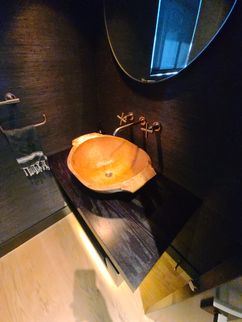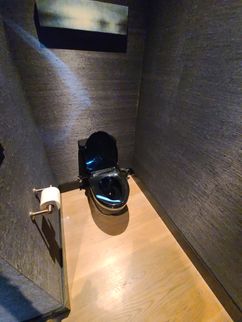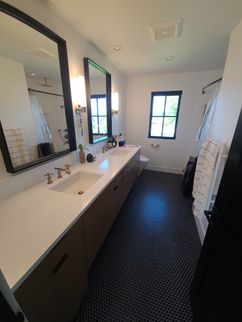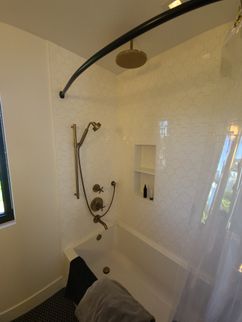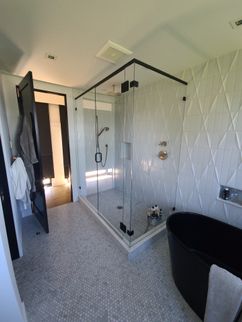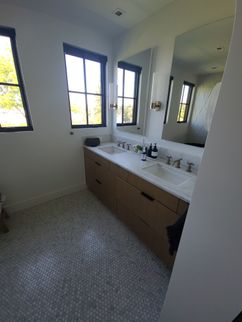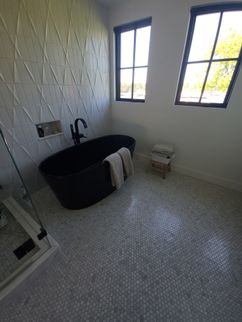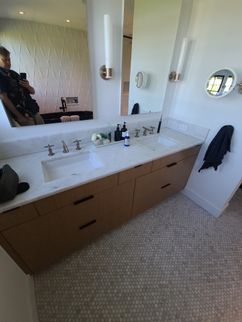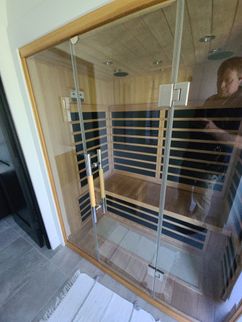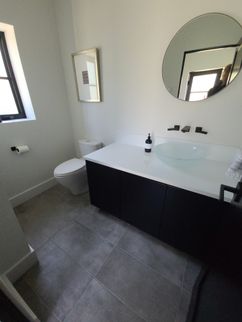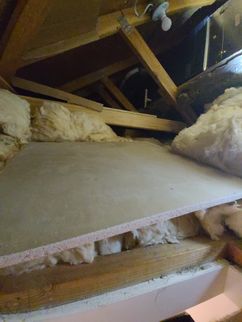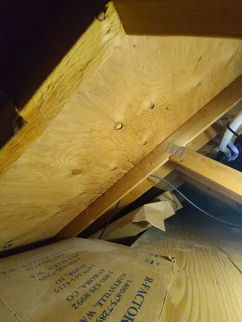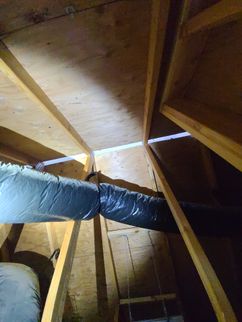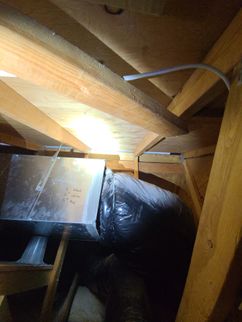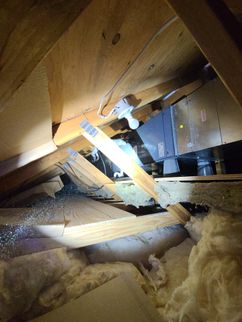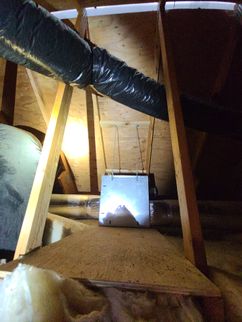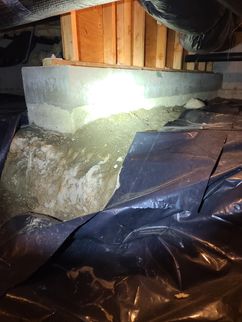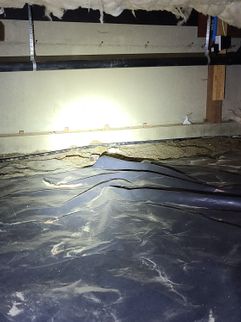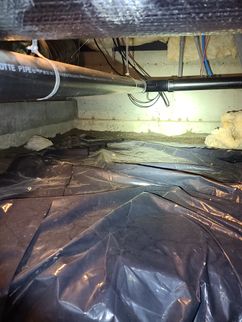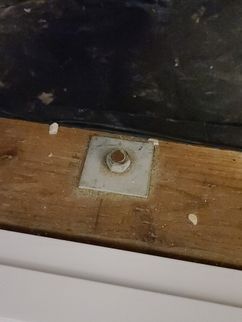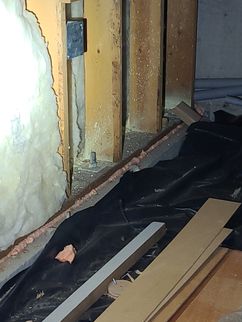The Scope and Purpose of a Home Inspection
Purchasing property involves risk
The purpose of a home inspection is to help reduce the risk associated with the purchase of a structure by providing a professional opinion about the overall condition of the structure. A home inspection is a limited visual inspection, and it cannot eliminate this risk. Some homes present more risks than others. We cannot control this, but we try to help educate you about what we don’t know during the inspection process. This is more difficult to convey in a report and one of many reasons why we recommend you attend the inspection.
A home inspection is not an insurance policy
This report does not substitute for or serve as a warranty or guarantee. Home warranties can be purchased separately from insuring firms that provide this service.
A home inspection is visual and not destructive
The descriptions and observations in this report are based on a visual inspection of the structure. We inspect the aspects of the structure that can be viewed without dismantling, damaging, or disfiguring the structure and without moving furniture and interior furnishings. Areas that are concealed, hidden, or inaccessible to view are not covered by this inspection. Some systems cannot be tested during this inspection as testing risks damaging the building. For example, overflow drains on bathtubs are generally not tested because if they were found to be leaking, they could damage the finishes below. Our procedures involve non-invasive investigation and non-destructive testing, which will limit the scope of the inspection.
This is not an inspection for code compliance
This inspection and report are not intended for city / local code compliance. During the construction, process structures are inspected for code compliance by municipal inspectors. Framing is open at this time, and conditions can be fully viewed. Framing is not open during inspections of finished homes, limiting the inspection. All houses fall out of code compliance shortly after they are built, as the codes continually change. National codes are augmented at least every three years for all disciplines. Municipalities can adopt and phase in sections of the codes on their timetables. There are generally no requirements to bring older homes into compliance unless substantial renovation is being done.
This is just our opinion
Construction techniques and standards vary. There is no one way to build a house or install a system in a house. The observations in this report are the opinions of the home inspector. Other inspectors and contractors are likely to have some differing opinions. You are welcome to seek opinions from other professionals.
The scope of this inspection
This inspection will include the following systems: exterior, roof, structure, drainage, foundation, attic, interior, plumbing, electrical, and heating. The evaluation will be based on limited observations that are primarily visual and non-invasive. This inspection and report are not intended to be technically exhaustive.
Your expectations
The overall goal of a home inspection is to help ensure that your expectations are appropriate for the house you are proposing to buy. To this end, we assist with the discovery by showing and documenting observations during the home inspection. This should not be mistaken for a technically exhaustive inspection designed to uncover every defect in a building. Such inspections are available, but they are generally cost-prohibitive to most homebuyers.
Your participation is requested
Your presence is requested during this inspection. A written report will not substitute for all the possible information that can be conveyed verbally by a shared visual observation of the conditions of the property.
How to Read This Report
Getting the Information to You
This report is designed to deliver important and technical information in a way that is easy for anyone to access and understand. If you are in a hurry, you can take a quick look at our "Summary Page” and quickly get the critical information for important decision-making. However, we strongly recommend that you take the time to read the full Report, which includes digital photographs, captions, diagrams, descriptions, videos, and hot links to additional information.
The best way to get the layers of information presented in this report is to read your report online, which will allow you to expand your learning about your house. You will notice some words or series of words highlighted in blue and underlined – clicking on these will provide you with additional information.
This report can also be printed to a PDF file and printed on paper as desired.
Chapters and Sections
This report is divided into chapters that parcel the home into logical inspection components. Each chapter is broken into sections that relate to a specific system or component of the home. You can navigate between chapters with the click of a button on the left-side margin.
Most sections will contain some descriptive information in black font. Observation narrative, done in colored boxes, will be included if a system or component is found to be significantly deficient in some way or if we wish to provide helpful additional information about the system or the scope of our inspection. If a system or component of the home was deemed to be in satisfactory or serviceable condition, there might be no narrative observation comments in that section, and it may simply say “tested” or “inspected.”
Observation Labels
All narrative observations are colored, numbered, and labeled to help you find, refer to, and understand the severity of the observation. Observation colors and labels used in this report are:
- Major Concern:Repair items that may cost significant money to correct now or in the near future, or items that require immediate attention to prevent additional damage or eliminate safety hazards.
- Repair:Repair and maintenance items noted during inspection. Please note that some repair items can be expensive to correct such as re-finishing hardwood floors, but are considered simply repair items due to their cosmetic nature.
- Recommended Maintenance:These are repair items that should be considered "routine home ownership items," such as servicing the furnace, cleaning the gutters or changing the air filters in the furnace.
- Due Diligence:Observation such as a buried oil tank that may require further investigation to determine the severity and / or urgency of repair.
- Recommended Disclosure Items:These are observations for which we recommend that sellers disclose more information to buyers so that buyers can better understand recent servicing, repairs or maintenance or even construction history or building and site design.
- Monitor:Items that should be watched to see if correction may be needed in the future.
- Improve or Upgrade:Observations that are not necessarily defects, but which could be improved for safety, efficiency, or reliability reasons. These are often items which reflect changes in building codes or standards.
- Future Project:A repair that may be deferred for some time but should be on the radar for repair or replacement in the near future.
- Inspection Notes:Aside information and /or comments elaborating on descriptions of systems in the home that the inspector might find useful to purchase decisions or home ownership. .
Summary Page
The Summary Page is designed as a bulleted overview of all the observations noted during the inspection. This helpful overview is not a substitute for reading the entire inspection report. The entire report must be read to get a complete understanding of this inspection report, as the Summary Page does not include photographs or photo captions.
Moisture Meter Testing
Where moisture meter testing is indicated in this report, a Protimiter Survey Master Dual Function was used.
Summary
Major Concerns
No major concerns were noted during this visual inspection.Repairs
- RCG-5 Roof, Chimney and Gutters:
Evidence of a localized moisture control problem was found at the base of the west facing chimney - see below the deck. White water-like stains were noted on the plywood here. It is possible this is from construction but the plywood seems t be delaminating. Environmental conditions were dry at the time of inspection so I could not verify with a moisture meter. Have this further investigated by a qualified general contractor and repaired as deemed necessary.
✒️ - Please note that I probed around the edge of the chimney from the deck and there seems to be a flashing here but tis was difficult to see.
- P-15 Plumbing:
The discharge tube for the garage water heater temperature and pressure relief valve (TPRV) is not correctly installed - see attached link. This is a potential safety hazard. Ideally, the discharge tube for a relief valve:
- Terminates to an exterior location or above a drain, though this is not always possible
- Terminates between 6 and 24-inches off the ground (UPC)
- Slopes to drain to prevent water pooling inside the discharge tube
- Is not made from pipe with an inside diameter less than 3/4 on an inch
- Terminates to a visible location that can be monitored for leaks and discharges
- Does not have a threaded termination point which would prevent accidental capping of this important discharge
- Does not terminate into a drain pan
I recommend having this relief valve discharge tube further investigated and repaired as recommended by a licensed plumber.
- MB-2 Main Bathroom:
The hot water faucets for the main bathroom twist in opposite directions. This can be confusing. Adjust as needed for similar operation.
- A-1 Attic:
The attic access hatches and doors require insulation and weather stripping to prevent heat loss and heat migration into the attic.
Recommended Maintenance
- ES-5 Electric Service:
I was unable to find a disconnect for the spa. I expect these is one here but likely covered by vegetation. I recommend making this visible to the spa for safety. The disconnect should be within line of sight for safety.
- P-1 Plumbing:
Condensation was noted on the exposed metal water pipes in the garage utility room. Insulating these pipes is recommended to reduce risks from freezing and condensation.
- P-16 Plumbing:
This building has hot water provided by a tankless water heater. Periodic flushing is recommended for these types of water heaters to prevent scaling and mineral build-up that could impact performance. Flushing is typically done using the flush kit to push vinegar through the heat exchangers. I recommend keeping this water heater on a regular service schedule. The frequency of servicing depends a on the quality of the water and frequency of use, so it is difficult to make a blanket recommendation. I would consider a servicing at least every 2-3 years to start and adjust frequency as needed. Have this water heater serviced as part of recommended scheduled maintenance if it has not been done in the last few years.. During inspection, a number of items were noted:
- CS-2 Crawl Space:
The plastic vapor barrier in the crawl space is not covering all of the soils. Covering all exposed soil is important to control humidity in the crawl space and the house. Adjust the plastic vapor barrier in the crawl space to cover all soils.
Due Diligence Items
- GC-1 General Comments:
As this is a new construction building, the building plans, permits, drainage plans, construction records, a list of sub-contractors and warranty information is available. I recommend trying to obtain and keep this information for your records and for future re-sale.
- AP-5 Additional Plumbing:
This property has a newer looking spa. The spa had hot water at the time of inspection and seems to be operating. Evaluation of spa equipment is beyond the scope of this inspection. I recommend disclosing any additional information about this spa. Are there any warranties or service records?
Recommended Disclosure Items
- RCG-1 Roof, Chimney and Gutters:
The roofing material on this home appears to be a recently installed standing seem metal roof. These are often rated as 35-year roofing systems. In practice, service life depends a great deal on the quality of the roofing materiel, the quality of the installation, the steepness of the roof, roof roof design and the amount of exposure. The installation appears neat and professional. Disclose any installer or warranty information for this roof. Many professional roofing companies will offer limited workmanship warranties. In general, the weak points on metal roofs are flashings around penetrations where often sealant is used. Over time this can break down and fail and require tune up. Visual inspection by drone could not find a need for repairs at this time.
- ES-4 Electric Service:
This home has a generator installed with an automatic transfer switch. Inspection and evaluation of generator power systems is beyond the scope of this inspection. I recommend disclosing any receipts, installer information or maintenance information about this system. I recommend keeping this nice unit on a routine service schedule. To prepare the home for the market, I recommend a servicing if it has not been done in the last year or two.
✒
- During the inspection the generator happened to start for its periodic run cycle.
- EDFW-4 Electric Distribution and Finish Wiring:
This house has a smoke / heat detector system. Some of these can even be tied into a house security system. I do not test these systems. A critical part of the electric system tutorial is understanding this smoke detector system. Also, determine if these detectors also do carbon monoxide. This house was built prior to carbon monoxide alarm requirements.
- EDFW-5 Electric Distribution and Finish Wiring:
A transformer was noted on the exterior of the house - this looks to be for a low voltage lighting system. Disclose any additional information about this system. Low voltage lighting systems are beyond the scope of this inspection and they do require periodic maintenance to keep them operating well.
- EDFW-6 Electric Distribution and Finish Wiring:
A "smart box" low-voltage wiring panel was noted in the basement. This is designed to house the low voltage CATV and phone wires. Home owners will often use these to create in house networks for internet and communication devices and may locate internet routers here. Inspection of low voltage wiring and communication wiring is beyond the scope of this inspection. Disclose any additional information.
- HCFV-9 Heating, Cooling, Fireplaces and Ventilation:
There is a ventilation system located in the attic that is accessed through the coat closet. Some of these systems have filters that can require periodic cleaning or changing. Disclose any additional information about this system and controls for this system.
- P-4 Plumbing:
Water for this home appears to be supplied by a well system. Inspection of the well, water supply and water quality is beyond the scope of this inspection. I recommend disclosing any additional information about the well. Well equipment: the pump and captive storage tank have limited service lives and often require updating on a 20-year schedule. There are other elements of a well system that should be evaluated as well, such as the well production, often tested in a draw down test, water quality and well depth.
- P-9 Plumbing:
This property appears to have a private on-site septic system based on visible components. These are specialty systems and are excluded from this inspection. Comments in this report related to this system are made as a courtesy only and are not meant to be a substitute for a full evaluation by a qualified specialist. Generally, septic tanks should be pumped and inspected every 3 years. Depending on the type of system and municipal regulations, inspection and maintenance may be required more frequently, often annually. I recommend:
- Disclosing any information about this system's maintenance and repair history
- Provide any documentation available for this system
- Provide inspection and maintenance requirements for this system
- Hire a qualified specialist to evaluate, perform maintenance and make repairs as needed
- AP-3 Additional Plumbing:
An exterior irrigation system was noted for this home. Sprinkler and irrigation systems are beyond the scope of this inspection. My own experience with irrigation systems is that they require annual attention/repair/servicing after every winter. Disclose any information about how to winterize this system as this should be done prior to cold weather. When testing the system, be sure sprinkler heads are adjusted so the system is not watering the side of the house. Hire a specialist to further evaluate this system as desired.
- AP-4 Additional Plumbing:
A water filtration system was noted in the house - see in the garage and below the kitchen sink. Evaluation of this system and water quality is beyond the scope of this inspection. I recommend disclosing any maintenance, warranty or installer information that pertains to this system. If the system has not been serviced recently, have the filter system serviced and filters cleaned or replaced as a part of the recommended maintenance schedule.
- AP-6 Additional Plumbing:
The garage
Items for Monitoring
- ESDW-5 Exterior Siding, Doors and Windows:
The fiber cement siding has been installed too close to a concrete surface in a few places around the walkway and patio. Generally there should be a 2-inch clearance were exposed to the weather and 1-inch where protected. This could be difficult to correct. I would monitor and repair only if needed at this point.
- K-2 Kitchen:
Kitchen sink disposers are not recommended on septic systems. Refrain from using except for the items that get away from you. Here is a link for more information from the EPA about septic systems. Link to EPA guide.
Improve Or Upgrade Items
- LF-2 Laundry Facilities:
A moisture alarm with water shut-off features is recommended under the washing machine to protect against accidental leaks in the supply hoses. Pans can be effective when there is a drain, but even these will not protect against a burst supply connector. A moisture alarm with automatic shut-off will. Watts is a brand I have seen installed: Link.
Future Projects
- HCFV-6 Heating, Cooling, Fireplaces and Ventilation:
Annual servicing is recommended for all heating and cooling equipment to ensure reliable performance and to maximize the useful life of the equipment. This house has an air-sourced heat pump system. The system was tested in cooling mode during inspection and was operational. Recent service records were noted on the air handler. The average life of a heat pump system is around 20-years. I recommend keeping this heat pump system on an annual service schedule.
📸 The Complete Report
Grounds
Drainage and Site
Driveways/Walkways/Flatwork
Window and Stairwells
Grounds, Trees and Vegetation
Retaining Walls
Exterior Stairs
Fences
Outbuildings, Trellises, Storage Sheds, Barns
Exterior Siding, Doors and Windows
Exterior Elevations
Siding and Trim
Eaves
Exterior Doors
Exterior Window Frames
Decks, Porches and Balconies
Wood Decks Porches and Balconies
Concrete Decks, Stoops, Landings and Porches
Water-Resistant Decks and Balconies
Electric Service
Electric Service Permits Found
Electric Service Voltage Tested
Electric Service
Electric Service Equipment - Garage
Electric Service Equipment - House
Sub Panel - Garage
Generator Equipment
Appliance Disconnects
Electrical Grounding System
Electrical Bonding System
Electric Distribution and Finish Wiring
Branch Wiring
Receptacles and Fixtures
Smoke and Carbon Monoxide Alarm Systems
Low Voltage Wiring
Heating, Cooling, Fireplaces and Ventilation
Heat Pump Air Handlers
Small Electric Boiler For Studio
Air Filters
Cooling Systems and Heat Pumps
Heating and Cooling Distribution Systems
Mechanical Ventilation Systems
Additional Heat Sources
Gas Fireplaces
Solid Fuel Fireplaces
Plumbing
Water Service Supply
Distribution Pipe
Waste Pipe and Discharge
House Water Heaters
Water Heater - Garage
Water Temperature
Exterior Hose Bibs
Additional Sinks
Interior
General Interior Photos
Floors and Floor Materials
Walls, Ceilings, Trim, Hallways and Closets
Wall Insulation and Air Bypass
Stairs and Railings
Interior Doors
Windows
Kitchen
General Kitchen Photos
Sinks and Faucets
Cabinets and Countertops
Disposers
Dishwasher
Ventilation Method
Ranges, Ovens and Cooktops
Refrigerators
General Kitchen Condition
Basement Bathroom
General Bathroom Photos
Sinks and Cabinets
Toilet
Bathtub / Shower
Bathroom Ventilation
General Bath Condition
Powder Bathroom
General Bathroom Photos
Sinks and Cabinets
Toilet
Bathtub / Shower
Bathroom Ventilation
General Bath Condition
Family Bathroom
General Bathroom Photos
Sinks and Cabinets
Toilet
Bathtub / Shower
Bathroom Ventilation
General Bath Condition
Main Bathroom
General Bathroom Photos
Sinks and Cabinets
Toilet
Bathtub / Shower
Bathroom Ventilation
General Bath Condition
Garage Bathroom
General Bathroom Photos
Sinks and Cabinets
Toilet
Bathtub / Shower
Bathroom Ventilation
General Bath Condition
General Comments
Building Characteristics, Conditions and Limitations
Type of Building : Single Family (3-story)
Approximate Square Footage: 3800
The approximate square footage listed here is listed as a courtesy and is based off of public records and disclosure. An evaluation of square footage of the buildings and property lines is beyond the scope of this inspection.
Approximate Year of Original Construction: 2017
Attending the Inspection: Owner
Occupancy: Occupied
Animals Present: Yes
Weather during the inspection: Clear
Approximate temperature during the inspection: Over 75[F]
Ground/Soil surface conditions: Dry
For the Purposes of This Report, the Front Door Faces: South
As this is a new construction building, the building plans, permits, drainage plans, construction records, a list of sub-contractors and warranty information is available. I recommend trying to obtain and keep this information for your records and for future re-sale.
This home was occupied at the time of the inspection. Inspection of occupied homes presents some challenges as occupant belongings can obstruct visual inspection of and access to parts of the building. We do our best during inspection to work around belongings to discover as much as possible about the house without moving or damaging personal property, however, the presence of personal items does limit the inspection.
Grounds
Drainage and Site
Clearance to Grade: Standard, Siding Too Close to Soils - Monitor
Downspout Discharge: Below grade
Site Description: Moderate slope
Driveways/Walkways/Flatwork
Driveway: Gravel
Walkways: Concrete
Patios: Concrete
Window and Stairwells
None Noted
Grounds, Trees and Vegetation
Trees/Vegetation too near building: No
Retaining Walls
Retaining Wall Material: Concrete
Exterior Stairs
Exterior Stairs: Standard
Fences
Exterior Fencing: Partial fencing noted
The property has a fencing system in place. Inspection and evaluation of fencing is beyond the scope of a home inspection. If the fencing system is important for your use of this property, I recommended a self-examination to see how it will meet your needs. I may make cursory comments about fencing as a courtesy.
Outbuildings, Trellises, Storage Sheds, Barns
None noted
Exterior Siding, Doors and Windows
Siding and Trim
Trim Material: Wood
Siding Material: Fiber-cement
Manufacturers of fiber cement siding have done a poor job helping inspectors and consumers distinguish their products after installation; these products have few if any distinguishing characteristics. This report will site James Hardie manufacturers installation requirements for reference because they are the most common manufacturer of fiber cement siding and the various manufactures seem to share similar installation guidelines. Here is a link to the HZ-10 Best Practices Guide. However, reference of these guidelines in this report does not ensure that the fiber cement siding here is a James Hardie product.
The fiber cement siding has been installed too close to a concrete surface in a few places around the walkway and patio. Generally there should be a 2-inch clearance were exposed to the weather and 1-inch where protected. This could be difficult to correct. I would monitor and repair only if needed at this point.
I believe this siding is the Artisan collection by James Hardie.
Eaves
Tongue and groove
Exterior Doors
Exterior Door Styles: Glass panel doors, Sliding glass
Exterior Window Frames
Window Frames: Clad Exterior
Decks, Porches and Balconies
Wood Decks Porches and Balconies
Present
To see a prescriptive guide for residential wood deck construction click this link:
Structure: Ground contact treated lumber, Metal
Ledger Board: Standard
Guardrail: Standard
Decking Material: Hardwood
Posts, Beams and Footings: Inspected
The building has a nicely built wood deck structure with ground contact treated framing, hardwood decking and steel columns. I noted some mineralization stains at the base of some of the metal columns. No concrete cracking was noted. To date this appears cosmetic. I would monitor the base of the post to footing connection.
Concrete Decks, Stoops, Landings and Porches
Concrete Structure: None noted
Water-Resistant Decks and Balconies
Water Proof Surfaces: None Noted
Garage
Garage General
Garage Type: Detached
Garage Doors and Automatic Openers
Garage Floor
Garage Slab: Concrete
Garage Stairs
Garage Stairs: None noted
Roof, Chimney and Gutters
Roof Materials
Method of Roof Inspection: Viewed with a drone
Please note that the roof was too tall to access by ladder and walk safely. A drone was used to try and get some information about the roof. This is not as good an inspection as walking the roof, but is the best and safest option given limited access. Any and all relevant photos or videos will be included in this report.
Roof Style: Gable, Low slope
Flashings, Valleys and Penetrations: Present and Visually Standard
Roof flashings are used to keep a roofing system waterproof where the roofing material starts, stops, changes direction, or is penetrated. During the inspection, we look for standard flashing techniques that could be considered normal or standard in our region. Damaged, incomplete or non-standard flashings can be a sign of an older or less reliable roofing system and may require repair. Any non-standard flashings noted during the inspection will be reported below if found.
Roof Covering Materials: Metal standing seam
Metal roofing: The life expectancy of metal roofing materials can vary from 20–50 years, depending on the method of manufacture, thickness, of the roofing material, the quality of the installation, and the roof design and exposure. Maintenance for metal roofs is often dictated by the manufacturer and recommended maintenance procedures can vary depending on whether the roof material is painted, has zinc all the way through, or whether it is thinner sheet metal with painted-on weather protection. Some roofs only require debris to be cleaned off to prevent water damming. Others have proprietary cleaning methods to prevent damage to coatings and may require touch-up of corrosion to prevent corrosion from causing leaks.
Approximate Age of Roof Covering: 2-5 Years
Overlay Roof: No
The roofing material on this home appears to be a recently installed standing seem metal roof. These are often rated as 35-year roofing systems. In practice, service life depends a great deal on the quality of the roofing materiel, the quality of the installation, the steepness of the roof, roof roof design and the amount of exposure. The installation appears neat and professional. Disclose any installer or warranty information for this roof. Many professional roofing companies will offer limited workmanship warranties. In general, the weak points on metal roofs are flashings around penetrations where often sealant is used. Over time this can break down and fail and require tune up. Visual inspection by drone could not find a need for repairs at this time.
Chimneys
Present
Chimney Material: Masonry
Chimney Flue Liners: Not visible
Evidence of a localized moisture control problem was found at the base of the west facing chimney - see below the deck. White water-like stains were noted on the plywood here. It is possible this is from construction but the plywood seems t be delaminating. Environmental conditions were dry at the time of inspection so I could not verify with a moisture meter. Have this further investigated by a qualified general contractor and repaired as deemed necessary.
✒️ - Please note that I probed around the edge of the chimney from the deck and there seems to be a flashing here but tis was difficult to see.
Skylights
Insulated curb style
Gutters and Downspouts
Gutter and Downspout Materials: Seamless Aluminum
Fuel Storage and Distribution
Oil Storage
None noted
Propane Storage
Present
Storage Type: Below ground tank
Propane Tank Size: Not visible - below ground
Propane Shutoff Location: At secondary pressure regulator
This shows a propane shutoff at the secondary pressure regulator - east side of the garage
Gas Meter
None noted
Gas, Propane and Oil Piping
Gas Piping Materials Noted: Steel
Electric Service
Electric Service Voltage Tested
Electric Service
Service Entrance: Below Ground
Meter Base Amperage: 200
Electric Service Equipment - Garage
Service Entrance (SE) conductor Size: Aluminum, 4/0, 200 amps
Main Panel Amperage: 200 amps
Electric Service Amperage: 2 @ 200 amps
Main Electric Panel Location: Garage
Panel Manufacturer: Eaton
Please note that the main electric panels here are technically subpanels. These were inspected and seems to be wired correctly as a sub-panel. The general set-up is two sub-panels in the garage and two in the house.
Electric Service Equipment - House
Service Entrance (SE) conductor Size: Aluminum, 4/0, 200 amps
Main Panel Amperage: 200 amps
Electric Service Amperage: 200 amps
Main Electric Panel Location: Basement
Panel Manufacturer: Eaton
Sub Panel - Garage
Sub Panel: Present
Service Conductor Size: Aluminum, #1, 110 amps
Sub Panel Amperage: 100 amps
Sub Panel Location: Garage
Sub Panel Manufacturer: Eaton
Generator Equipment
This home has a generator installed with an automatic transfer switch. Inspection and evaluation of generator power systems is beyond the scope of this inspection. I recommend disclosing any receipts, installer information or maintenance information about this system. I recommend keeping this nice unit on a routine service schedule. To prepare the home for the market, I recommend a servicing if it has not been done in the last year or two.
✒
- During the inspection the generator happened to start for its periodic run cycle.
Appliance Disconnects
Disconnects Noted: Heat Pump, Spa (No Disconnect Found In Sight)
I was unable to find a disconnect for the spa. I expect these is one here but likely covered by vegetation. I recommend making this visible to the spa for safety. The disconnect should be within line of sight for safety.
Electrical Grounding System
Present - Could Not Confirm
During a home or property inspection, every effort is made to inspect the visible components of the electrical system grounding. The grounding system is critical for safely discharging electrical surges, especially in the case of lightning strikes. There is no way in the context of a home inspection to verify the "effectiveness" of the grounding system as much of the system is not visible, and there are no practical tests one can perform in the way we can test a furnace or a plumbing fixture. However, many things can lead me to recommend further evaluation of the grounding system by a licensed electrical contractor and they will be documented in the observations below if discovered.
Electrical Bonding System
Present - Could Not Confirm
During the inspection, I attempt to visually document electrical system bonding. There is no way in the context of a home inspection to verify the "effectiveness" of system bonding. All metallic systems in the building are required to be "bonded" (connected) to the the building's electrical grounding system. Bonding creates a pathway to shunt static charges (that would otherwise build up on the system) to earth, and to provide a pathway to trip a breaker in the event that these bonded metallic components became energized. There are many things that can lead me to recommend further evaluation of this system by a licensed electrical contractor and they will be documented as repair items in the observations below if discovered.
Electric Distribution and Finish Wiring
Branch Wiring
Wire Material: Copper, Multi-strand Aluminum
Wiring Method: Non-metallic sheathed cable
Receptacles and Fixtures
Inspection Method: Representative Testing
A representative number of receptacles and switches were tested during inspection. Any defects found during inspection are noted in this report. Only visible and accessible receptacles and switches were tested during inspection and personal items and furnishings are not moved to access any receptacles or fixtures. Inspection/testing of the electrical system can be challenging. It should be anticipated that not all defects will be discovered and that some issues found may actually not be defects at all. Tools used to verify proper wiring and function can vary wildly in reliability/consistency. The kinds of tools that could be used to confidently analyze the system and its function cannot typically be done in the context of a Standard Home Inspection. I look for indications of issues, based on the age of the home, types of wiring systems used etc, as well as personal experience and by testing with a variety of common tools. Issues identified, will be further discussed with recommendations in the electrical section below.
Electric Receptacles: Three wire receptacles
Smoke and Carbon Monoxide Alarm Systems
CO Alarms Noted: Outside all Sleeping Areas
Outside all Sleeping Areas On Main Floor
On Main Floor On 2nd Floor
On 2nd Floor In Basement
In Basement
CO Alarms: Present
The installation of carbon monoxide alarms is recommended for all homes that have fuel burning appliances such as gas or oil furnaces, gas water heaters, gas ovens and cooktops, gas fireplaces and wood stoves. In addition, Washington State law (WAC 51-51-0315) now requires UL 2034 approved carbon monoxide alarms in ALL homes and condominiums being sold in Washington State. The location should be: at least one alarm outside of all sleeping areas and one on each floor of the house. Best practices are to have these alarms hardwired with a battery back-up - though requirements are for the installation to meet manufacturer's specifications. Carbon monoxide is a colorless, odorless gas that can cause sickness, nausea and even death. Alarms have a useful service life of roughly 6 years, so changing them more frequently than smoke alarms is recommended.
Smoke Alarms Noted: On Main Floor
On Main Floor On 2nd Floor
On 2nd Floor In Basement
In Basement
Smoke Alarms: Present
During the home inspection, I try and test a representative sample of the smoke alarms by using the test button on the alarms. This is NOT an accurate test of the sensor, just a test to see if the unit is powered. For reliability, fire marshals recommended updating smoke alarms every ten years and changing batteries bi-annually. The latest data indicate that we should be using photoelectric technology in our smoke alarms for improved fire detection and reducing problems with false alarms, which can lead to disabling of this critical safety system. Unfortunately, the alarms must be removed to determine if they are photo-electric or ionization types. It is surprisingly complex to accurately test a smoke alarm system and determine the reliability, age, and type of sensor technology used, especially as many homes can have half a dozen or more alarms throughout the house. A complete evaluation of smoke alarms is beyond the scope of this inspection. For optimal fire safety, I recommend taking control of these critical safety devices and learning about how to service and maintain your smoke alarm system to keep the building occupants safe. For more information, please read this link. For more information, please read this link.
This house has a smoke / heat detector system. Some of these can even be tied into a house security system. I do not test these systems. A critical part of the electric system tutorial is understanding this smoke detector system. Also, determine if these detectors also do carbon monoxide. This house was built prior to carbon monoxide alarm requirements.
Low Voltage Wiring
A transformer was noted on the exterior of the house - this looks to be for a low voltage lighting system. Disclose any additional information about this system. Low voltage lighting systems are beyond the scope of this inspection and they do require periodic maintenance to keep them operating well.
A "smart box" low-voltage wiring panel was noted in the basement. This is designed to house the low voltage CATV and phone wires. Home owners will often use these to create in house networks for internet and communication devices and may locate internet routers here. Inspection of low voltage wiring and communication wiring is beyond the scope of this inspection. Disclose any additional information.
Heating, Cooling, Fireplaces and Ventilation
Heat Pump Air Handlers
Energy Source: Electricity
Heating Method: Electric forced air furnace, Heat pump
Manufacturer: Mitsubishi
Data Plate: 📸
This shows the data plates from the air handler.
Age: 2017
Small Electric Boiler For Studio
Energy Source: Electricity
Heating Method: Hydronic boiler
Manufacturer: Mini Boiler
Age: 2017
This system was tested and a heat rise was detected during inspection.
Air Filters
Cooling Systems and Heat Pumps
Heat Pump Present
The following list is a minimum set of requirements to be expected of heat pump or air conditioning servicing. I provide these as a courtesy to show they types of check-ups that should be expected from a professional servicing.
- Check compressor efficiency
- Check refrigerant level
- Clean the condenser coil
- Change or clean air filters
- Inspect contactors and wiring
- Inspect drive-sheaves, pulleys and belts
- Check and adjust for proper air flow
- Clean the blower motor as needed
- Lubricate all motors and shaft bearings
- Check, calibrate and program the thermostats and be sure the thermostat has adequate batteries as needed
- Check unit smoke detector, clean filter if applicable
- Check safety disconnect, laser-temp -- check across contacts
Manufacturer: Mitsubishi
System Type: Air Source
Listed Nominal Capacity: 4 Tons
Energy Source: Electric
Age: 2016
Annual servicing is recommended for all heating and cooling equipment to ensure reliable performance and to maximize the useful life of the equipment. This house has an air-sourced heat pump system. The system was tested in cooling mode during inspection and was operational. Recent service records were noted on the air handler. The average life of a heat pump system is around 20-years. I recommend keeping this heat pump system on an annual service schedule.
Heating and Cooling Distribution Systems
Heat Source in Each Room: Present
Distribution Method: Forced Air / Ducts, Floor Convection
Mechanical Ventilation Systems
Whole House Fans, Ventilation and HRVs: Central ventilation noted
Bath Fan Ducting: Ductwork not visible
Determining proper ventilation to the exterior from kitchen, bath, and laundry fans can be tricky as exhaust fan ductwork is often concealed behind finishes and fan terminations can be all over the house from the roof to the foundation, presenting difficulties for systematically checking every fan termination. During inspection, every effort is made to verify proper terminations of fan vents to the exterior, but it is possible to miss something here that is latent or concealed.
Kitchen Fan Ducting: Ductwork not visible
Additional Heat Sources
Description: Radiant Floor - Include IR Images
Thermal images show the radiant floor pads or electric floor heaters, working during inspection.
Gas Fireplaces
Fireplace Types: Direct vent gas log fireplace
System Responded to Testing: Yes
This shows the fireplace working during inspection.
Solid Fuel Fireplaces
Fireplace Types: No wood burning fireplaces or appliances noted
Plumbing
Water Service Supply
Pipe Material: Unknown
Water Supply: Private well
Water Pressure: Water Pressure Tested, 50 PSI
This shows the water pressure tested during inspection. Generally, "normal water pressure," should be between 30-80 PSI, though pressures near or below 30 can result in poor functional flow to fixtures. Water pressures in excess of 80 PSI risk damaging supply piping components and should be controlled with a pressure reducing valve.
Pressure Reducing Valve: None noted
Water for this home appears to be supplied by a well system. Inspection of the well, water supply and water quality is beyond the scope of this inspection. I recommend disclosing any additional information about the well. Well equipment: the pump and captive storage tank have limited service lives and often require updating on a 20-year schedule. There are other elements of a well system that should be evaluated as well, such as the well production, often tested in a draw down test, water quality and well depth.
Distribution Pipe
Pipe Insulation: Present
The visible portions of the supply piping appear to be insulated. However, prior to freezing weather it is always a good idea to check pipes and hose bibs for adequate insulation and freeze protection to protect pipes from cold weather and freezing conditions. Hose bibs can often be winterized prior to cold weather.
Supply Pipe Materials: Copper, PEX
Copper water supply pipes were installed. Copper pipes installed prior to the late 1980's may be joined with solder that contains lead, which is a known health hazard especially for children. Laws were passed in 1985 prohibiting the use of lead in solder, but prior to that solder normally contained approximately 50% lead. Note that testing for toxic materials such as lead, is beyond the scope of this inspection. Consider having a qualified lab test for lead, and if necessary take steps to reduce or remove lead from the water supply. Various solutions include:
- Flush water taps or faucets. Do not drink water that has been sitting in the plumbing lines for more than 6 hours
- Install appropriate filters at points of use
- Use only cold water for cooking and drinking, as hot water dissolves lead more quickly than cold water
- Treat well water to make it less corrosive
- Have a qualified plumber replace supply pipes and/or plumbing components as necessary
This building has PEX tubing used for supply piping. Crimp ring connections on PEX pipe have very specific installation guidelines and most of these connections will not be visible at the time of inspection (just like any other type of pipe fitting). It is beyond the scope of this inspection to evaluate a significant number of these connections.. Any leaking noted at fittings should result in more careful inspection of all of the plumbing system by a licensed plumber that is experienced in the installation of these types of connections
Functional Flow: Average
Circulation Pump: Present, Present - Set Timer As Desired
The water heating system has a circulation pump. These are designed to run the hot water in a loop to reduce wait times for hot water and conserve water. This appeared to be operating at the time of inspection. For improved efficiency these are often put on timers so the pump can be timed to go off at night and in the middle of the day. I noted a timer for the pump - I recommend setting as desired so the pump is operating during your likely hot water demand times.
Waste Pipe and Discharge
Discharge Type: Septic System - Seller
Waste and Vent Pipe Materials: ABS plastic
Location of Sewer Cleanout: Crawl Space
This property appears to have a private on-site septic system based on visible components. These are specialty systems and are excluded from this inspection. Comments in this report related to this system are made as a courtesy only and are not meant to be a substitute for a full evaluation by a qualified specialist. Generally, septic tanks should be pumped and inspected every 3 years. Depending on the type of system and municipal regulations, inspection and maintenance may be required more frequently, often annually. I recommend:
- Disclosing any information about this system's maintenance and repair history
- Provide any documentation available for this system
- Provide inspection and maintenance requirements for this system
- Hire a qualified specialist to evaluate, perform maintenance and make repairs as needed
For more information about septic systems and how they work, please see this web site from the EPA - a homeowners guide to on-site septic systems:
House Water Heaters
System Type: Tank
Manufacturer: Bradford-White
Size: 2 @ 50 gal
Age: Bradford White (P = 2017)
Energy Source: Electricity
Straps : Present
Pad: Present
Drain Pan: Not Needed
Expansion Tank: Present
Relief Valve: Present - Not Tested
A temperature and pressure relief valve (TPRV) is required on all water heaters to discharge any excessive pressure within the tank. A discharge pipe should be attached to the valve and directed to a safe location away from body contact. Newer installations must be directed to the building exterior or to an approved indoor drain receptor. Most manufacturers suggest that homeowners test these valves at least once a year by lifting the lever to ensure the valve discharges properly and also recommend inspection of these safety devices every three years. The picture here shows a typical TPRV. They may also be found on the side of the heater on some models. I do not test these valves due to the possibility that they may leak after testing. A leaking or inoperative TPRV should be replaced immediately by a licensed plumber.
Due to inconsistencies between both UPC and IPC Plumbing codes, and water heater manufacturer's instructions, and TPRV manufacturer instructions, it is not actually possible to install the drain from the Water Heater TPRV "properly." There are conflicts with distance of termination to the floor/ground, types of pipes approved, and diameters of pipes approved. Additional confusion is added when jurisdictional inspectors approve installations/materials specifically not allowed by both codes and manufacturers. My recommendations will vary depending on the installation and will be included in the applicable narratives below.
Most codes defer to manufacturer instructions and I favor those recommendations. The yellow tag on the valve states clearly the termination should be 6" above the floor which is more consistent with the UPC code requirements.
Bollard: None Required
The two water heaters here appear to be plumbed in parallel - note the two cold water shutoffs. My understanding is this helps the tanks ware more evenly and is generally a preferred way to plumb multiple water heaters.
Water Heater - Garage
System Type: Tank-less
Manufacturer: Rinnai
Size: 180 MBTU
Age: 2015
Energy Source: Propane
Straps : None needed - tankless
Pad: None Needed
Drain Pan: Not Needed
Expansion Tank: Present
Relief Valve: Present - Not Tested, Inadequate Discharge - General Note
A temperature and pressure relief valve (TPRV) is required on all water heaters to discharge any excessive pressure within the tank. A discharge pipe should be attached to the valve and directed to a safe location away from body contact. Newer installations must be directed to the building exterior or to an approved indoor drain receptor. Most manufacturers suggest that homeowners test these valves at least once a year by lifting the lever to ensure the valve discharges properly and also recommend inspection of these safety devices every three years. The picture here shows a typical TPRV. They may also be found on the side of the heater on some models. I do not test these valves due to the possibility that they may leak after testing. A leaking or inoperative TPRV should be replaced immediately by a licensed plumber.
Due to inconsistencies between both UPC and IPC Plumbing codes, and water heater manufacturer's instructions, and TPRV manufacturer instructions, it is not actually possible to install the drain from the Water Heater TPRV "properly." There are conflicts with distance of termination to the floor/ground, types of pipes approved, and diameters of pipes approved. Additional confusion is added when jurisdictional inspectors approve installations/materials specifically not allowed by both codes and manufacturers. My recommendations will vary depending on the installation and will be included in the applicable narratives below.
Most codes defer to manufacturer instructions and I favor those recommendations. The yellow tag on the valve states clearly the termination should be 6" above the floor which is more consistent with the UPC code requirements.
Bollard: None Required
The discharge tube for the garage water heater temperature and pressure relief valve (TPRV) is not correctly installed - see attached link. This is a potential safety hazard. Ideally, the discharge tube for a relief valve:
- Terminates to an exterior location or above a drain, though this is not always possible
- Terminates between 6 and 24-inches off the ground (UPC)
- Slopes to drain to prevent water pooling inside the discharge tube
- Is not made from pipe with an inside diameter less than 3/4 on an inch
- Terminates to a visible location that can be monitored for leaks and discharges
- Does not have a threaded termination point which would prevent accidental capping of this important discharge
- Does not terminate into a drain pan
I recommend having this relief valve discharge tube further investigated and repaired as recommended by a licensed plumber.
This building has hot water provided by a tankless water heater. Periodic flushing is recommended for these types of water heaters to prevent scaling and mineral build-up that could impact performance. Flushing is typically done using the flush kit to push vinegar through the heat exchangers. I recommend keeping this water heater on a regular service schedule. The frequency of servicing depends a on the quality of the water and frequency of use, so it is difficult to make a blanket recommendation. I would consider a servicing at least every 2-3 years to start and adjust frequency as needed. Have this water heater serviced as part of recommended scheduled maintenance if it has not been done in the last few years.. During inspection, a number of items were noted:
Water Temperature
Exterior Hose Bibs
Operating
Additional Plumbing
Sump Pumps and Drains
Floor Drain: Basement Floor Drain Present, Drain Primer Installed - Note
A floor drain was noted in the garage boiler room and in the house basement. I do not test floor drains but I do recommend they be tested for function by the homeowner or a handy-person by running a hose in them for a prolonged time or having them professionally scoped by a qualified plumber. The traps in these drains sometimes dry-out allowing sewer gases and vermin into the home. As a part of routine maintenance I recommend making sure drain trap has water in it and is properly covered.
Sump Pumps: None noted
Irrigation
Noted For Seller
An exterior irrigation system was noted for this home. Sprinkler and irrigation systems are beyond the scope of this inspection. My own experience with irrigation systems is that they require annual attention/repair/servicing after every winter. Disclose any information about how to winterize this system as this should be done prior to cold weather. When testing the system, be sure sprinkler heads are adjusted so the system is not watering the side of the house. Hire a specialist to further evaluate this system as desired.
Water Filters
A water filtration system was noted in the house - see in the garage and below the kitchen sink. Evaluation of this system and water quality is beyond the scope of this inspection. I recommend disclosing any maintenance, warranty or installer information that pertains to this system. If the system has not been serviced recently, have the filter system serviced and filters cleaned or replaced as a part of the recommended maintenance schedule.
Spa
This property has a newer looking spa. The spa had hot water at the time of inspection and seems to be operating. Evaluation of spa equipment is beyond the scope of this inspection. I recommend disclosing any additional information about this spa. Are there any warranties or service records?
Outdoor Shower
The outdoor shows was tested and operating during inspection. Be sure to winterize this during cold weather.
Interior
Floors and Floor Materials
Floor Materials: Hardwood, Tile, Concrete
Floor Settlement: None noted
Walls, Ceilings, Trim, Hallways and Closets
Wall and Ceiling Materials: Drywall
During this inspection, a thermal imaging camera was used to check walls, ceilings and appliances for thermal anomalies. Thermal imaging cameras use the infrared light spectrum to build a picture based on temperature differentials. Experienced thermogrophers look for clues in these thermal images that could lead us to otherwise-concealed moisture control problems or missing air or thermal barriers. We can also use them for appliance verification. We do not use infrared for electrical inspections. In older homes, incomplete air and thermal barriers are so common, we will only report on items that look significantly deficient and which seem worthy of correction.
This service is included with our home inspection; it is limited and is not a complete thermal mapping of the house. The use of an infrared camera is well beyond the minimum standards for a home inspection. We offer this service because we know it is valuable and can help us help our clients by improving our inspection services.
Please note that this tool has limitations when done in conjunction with a home inspection. Environmental conditions at the time of inspection present limitations to the information that can be gathered during the course of a home inspection. For example, occupant behavior, the time of day, time of year and weather conditions can all impact the usefulness of the data that can be gathered.
Relevant thermal images will be included in this report. A few examples photos are provided here.
Wall Insulation and Air Bypass
Wall Insulation: Not Visible
Stairs and Railings
Standard
Interior Doors
Interior Doors: Solid Core
Windows
Window Glazing: Double pane
Interior Window Frame: Wood
Window Styles: Casement, Fixed pane
Kitchen
Sinks and Faucets
Tested
Cabinets and Countertops
Countertop Material: Slab Surface
Cabinet Material: Wood laminate, Wood
This video shows how the trash can drawer works in the kitchen.
Disposers
Disposer: Operated, Septic Concerns (Not Recommended on Septic - Monitor)
Kitchen sink disposers are not recommended on septic systems. Refrain from using except for the items that get away from you. Here is a link for more information from the EPA about septic systems. Link to EPA guide.
Dishwasher
Dishwasher: Operated
Johnson Tee: Present
This building has a Johnson Tee installed to protect the dishwasher in its connection to the waste piping system. The link here has additional information about these systems.
Ventilation Method
Fan Ducted to Exterior
Ranges, Ovens and Cooktops
Range/ Oven /Cook-tops: Gas
Refrigerators
Refrigerator: Operating
General Kitchen Condition
Standard
Laundry Facilities
Washer
Tested
During inspection I try and run the clothes washing machine. This is mostly so that I can push water down the drain to test the waste piping system. Running the clothes washer during an inspection is not a reliable test of the appliance. I am not actually doing a load of laundry, so please note the limitations of this test.
A moisture alarm with water shut-off features is recommended under the washing machine to protect against accidental leaks in the supply hoses. Pans can be effective when there is a drain, but even these will not protect against a burst supply connector. A moisture alarm with automatic shut-off will. Watts is a brand I have seen installed: Link.
Dryer
Tested
Proper dryer exhaust venting is critical for safe and reliable performance from the dryer. Here are some basic rules of thumb for dryer exhaust duct installation: Unless a vent-free appliance is being used, the dryer exhaust vent must terminate outdoors. It should be no more than 25 feet long and for every 90 degree turn subtract 5 feet and for every 45 degree bend subtract 2.5 feet. Use only smooth-wall metal vent pipe @ 4 inch pipe diameter. Do not use plastic pipe and plastic flex pipe. If a flexible connector is needed behind the dryer use a short amount of corrugated metal pipe. If the exhaust duct is getting pinched behind dryer, consider use of a dryer vent box, pictured here. Flex and corrugated pipes should never be used in concealed spaces such as through walls or in attic or crawl spaces. Insulate dryer exhaust duct where it passes through unconditioned spaces to prevent condensation that could hasten lint build-up inside the pipe. Do not use screws to connect pipe as these can trap lint. Secure duct with foil tape as needed. Be sure duct is sleeved properly so that it will not trap lint and clean the vent regularly, especially if it is a long exhaust run.
Power Source: Electric
Exhaust Duct: Ducted to Exterior
Laundry Sinks
Tested
Laundry Ventilation
Type: Fan and window
Basement Bathroom
Sinks and Cabinets
Tested
Toilet
Tested
Bathtub / Shower
Tested
Shower Type: Tile
Bathroom Ventilation
Type: Bath fan
General Bath Condition
Standard
Powder Bathroom
Sinks and Cabinets
Tested
Toilet
Tested
Bathtub / Shower
None noted
Bathroom Ventilation
Type: Fan and window
General Bath Condition
Standard
Family Bathroom
Sinks and Cabinets
Tested
Toilet
Tested
Bathtub / Shower
Tested
Bathroom Ventilation
Type: Fan and window
General Bath Condition
Standard
During inspection today I operated all plumbing fixtures in bathrooms. I ran a moisture meter around toilets and tile shower enclosures to check for concealed leaks and sounded for loose tile and finishes in shower and tub enclosures. I do not test bathtub overflow drains as this risks damaging finishes around the tub. Monitor tubs while filling and avoid pushing water into the overflow. Even well-installed overflow drains can leak as the gaskets that seal the overflow will dry out over time and may no longer provide a watertight seal. Monitor plumbing after moving into a new home as testing during inspection presents less stress on plumbing than daily use. Please note that vacant homes present additional risk as it can be difficult to distinguish how the plumbing system will respond to daily use. Any defects uncovered during inspection are listed in this report.
Main Bathroom
Sinks and Cabinets
Tested
The hot water faucets for the main bathroom twist in opposite directions. This can be confusing. Adjust as needed for similar operation.
Toilet
Tested
Bathtub / Shower
Tested
Bathroom Ventilation
Type: Fan and window
General Bath Condition
Standard
Garage Bathroom
Sinks and Cabinets
Tested
Toilet
Tested
Bathtub / Shower
Tested
Bathroom Ventilation
Type: Fan and window
General Bath Condition
Standard
Attic
Attic Access
Viewed at access, Crawled partial
Roof Framing and Sheathing
Rafters: Truss
Sheathing: Plywood
I inspected the attic space today and no red flags were noted regarding prior moisture build-up or relative humidity. Venting appeared unrestricted where visible. Wood has a nice bright color indicating no prior moisture problems with relative humidity or heat migration into the attic.
Attic Insulation
Insulation Type: Fiberglass
Approximate Insulation R-Value on Attic Floor: 49
Attic and Roof Cavity Ventilation
Attic Ventilation Method: Soffit vents, Ridge vents
Attic and roof cavity ventilation is a frequently misunderstood element of residential construction. All roof cavities are required to have ventilation. The general default standard is 1 to 150 of the attic area and ideally, this comes from at least 60% lower roof cavity ventilation and 40% upper, but this is a wild over-simplifications of the subject. As a good guiding principle the most important elements for healthy attic spaces, which are traditionally insulated and ventilated are:
- Make sure the ceiling between the living space and the attic is airtight
- Ventilate consistently across the whole lower part of the roof cavity with low, intake soffit venting
- Upper roof cavity venting is less important and if over-installed can exacerbate air migration into the attic from the living space.
- Avoid power ventilators which can depressurize the attic and exacerbate air migration from the house into the attic.
For more information, please see: Link
Crawl Space
General Crawl Space
Crawl Space: Present
Crawl Space Access
Method of Inspection: Crawled
During inspection of the crawl space, every effort is made to inspect the entire space. Visual inspection of crawl spaces is difficult and limited as access is often restricted by pipes, ducts and sub-floor insulation as well as limited clearances.
Vapor Barrier
Vapor Barrier Material: Plastic on earth, Adjustment Needed
Crawl Space Ventilation
Ventilation Method: Exterior wall vents
Posts and Footings
Standard
Insulation
Insulation Type: Fiberglass
Approximate R-Value: R-30
Moisture Conditions
No water was visible or present at the time of inspection
Structure and Basement
Foundation
% of Foundation Not Visible: 50%
Evidence of Seismic Protection: Present
Building Configuration: Slab on grade (garage slab), Basement, Crawl space
Foundation Description: Poured concrete
Floor, Wall and Ceiling Framing
Wall Framing: Not visible
Wall Sheathing: Not visible
Floor Framing: Partly visible, Wood I-Joists
Sub-Floor Material: Not visible
Ceiling Framing: Not visible
Basement
Partial
Basement Moisture
None noted
Rodents, Pests and Wood Destroying Organisms
Rodents
None noted
Other Pests
None noted
Wood Destroying Organisms
Visible Evidence of Active Wood Destroying Insects: None noted
Visible Evidence of Inactive Wood Destroying Insects: None noted
Visible Evidence of Damage from Wood Destroying Insects: None noted
Visible Evidence of Active Wood Decay and Fungi: Present, See WDO Comments in this report
Visible Evidence of Conditions Conducive to Wood Destroying Organisms: Present, See WDO observations in this report
Receipt -- 📸 The Complete Report
6524 Sample Lane Bainbridge Island, WA 98110
| Single-Family Home (Pre-Listing Home Inspection) | $945.00 |
| Detached Garage | $30.00 |
| $975.00 | |
| PAID |
Orca Inspection Services LLC
5761 NE Tolo Rd
Bainbridge Island, WA 98110
206-713-5715
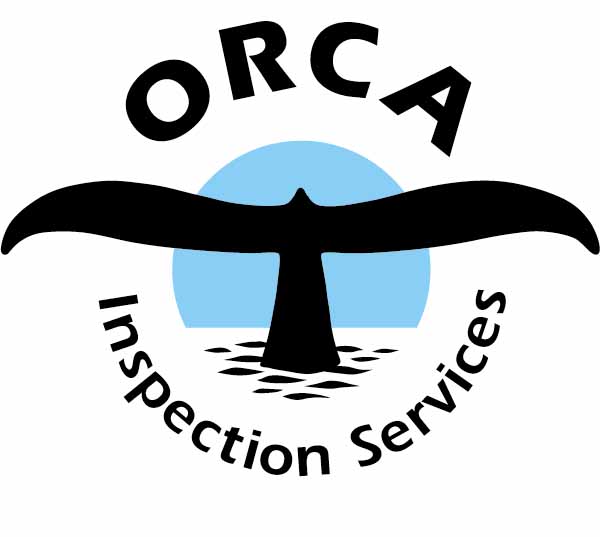
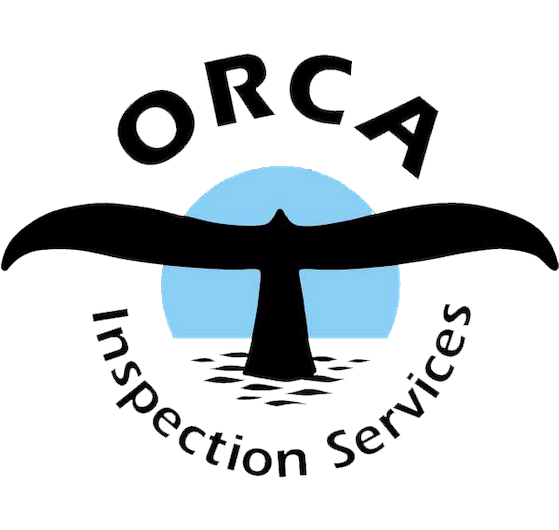
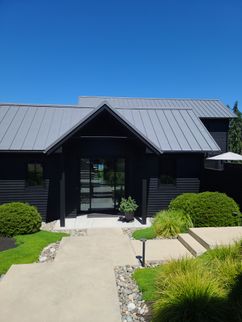
.gif)
.gif)
.jpg)

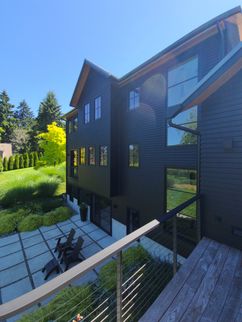
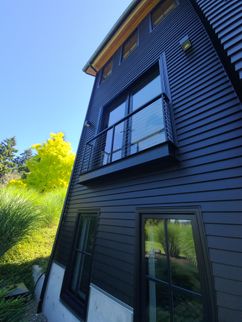
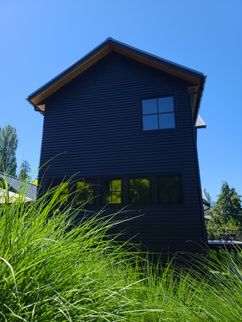
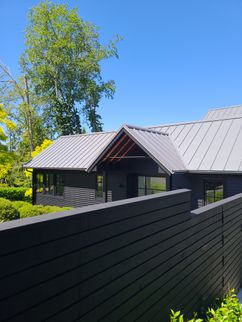
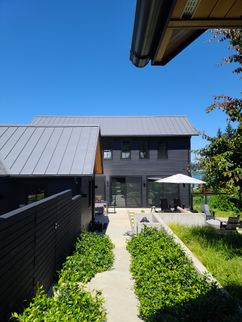

%20(1).png)
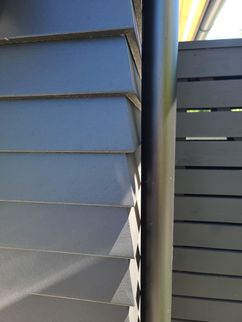
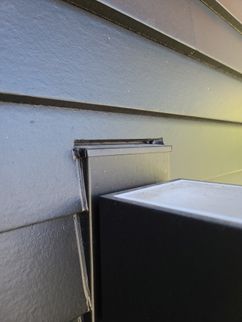

 (2).jpg)
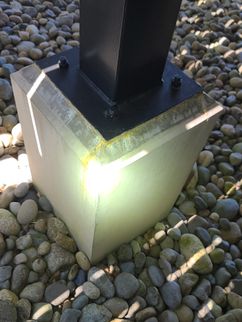


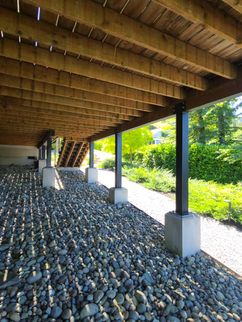
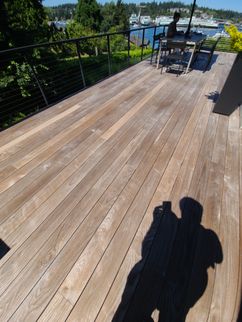

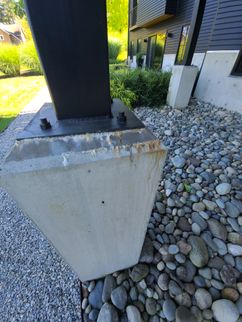
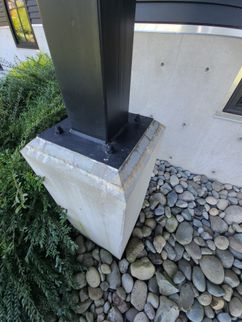
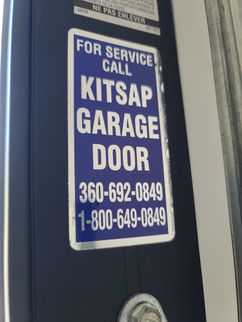
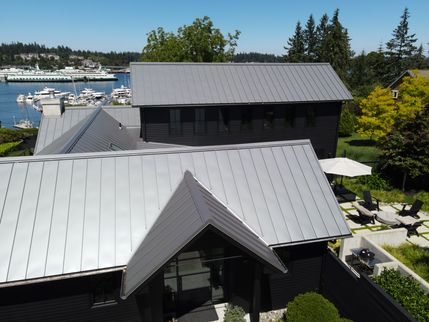

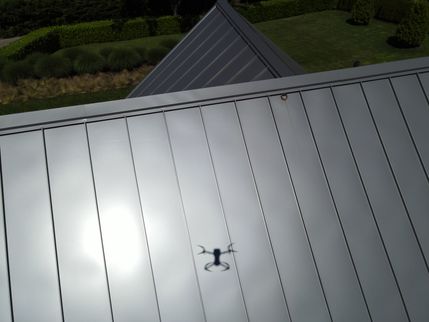
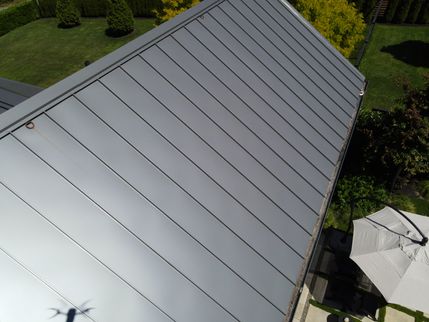


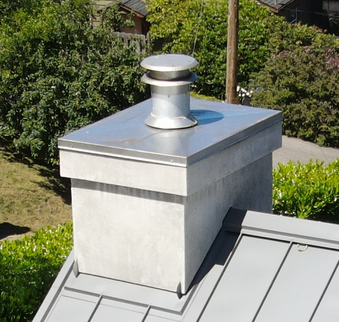
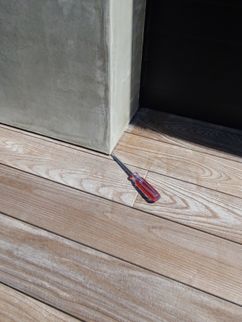

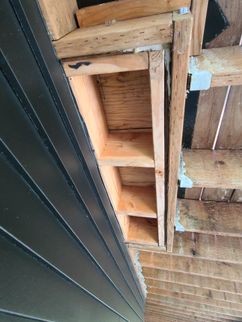

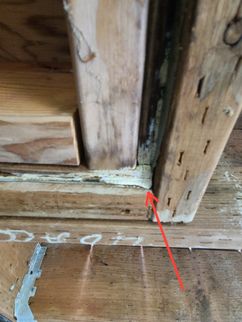
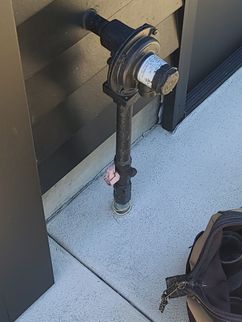
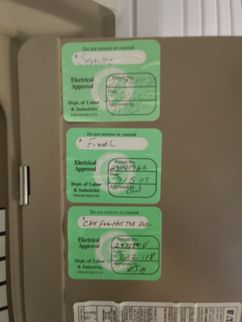
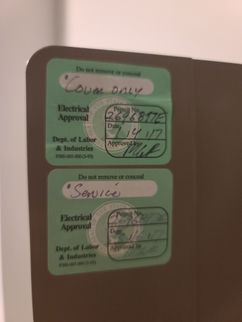

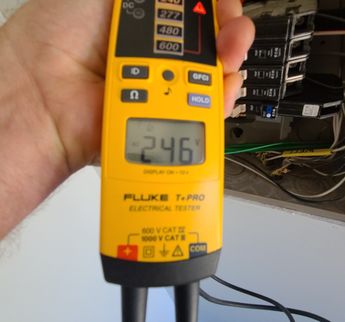
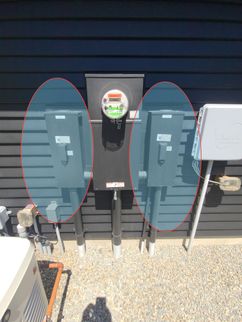

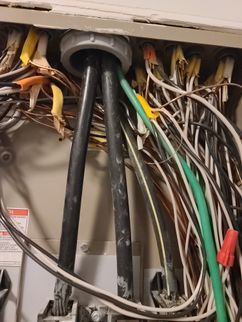
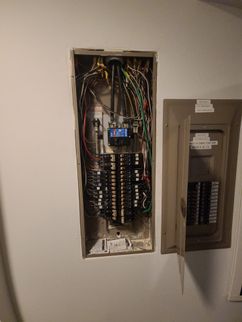
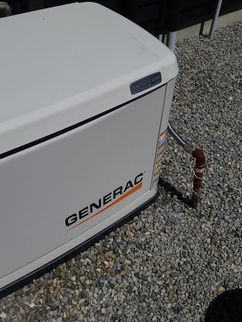

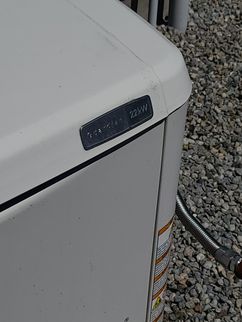
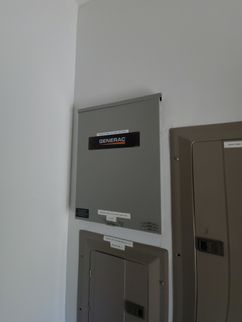



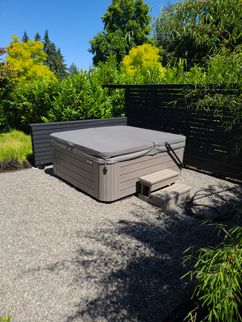
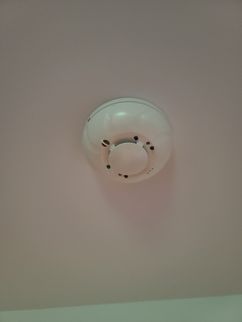
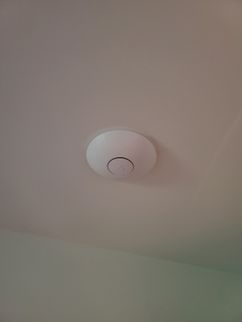
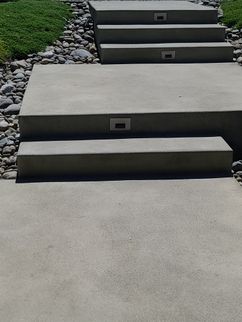
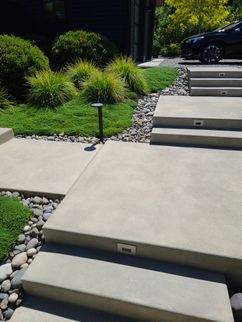
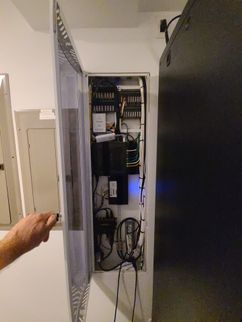
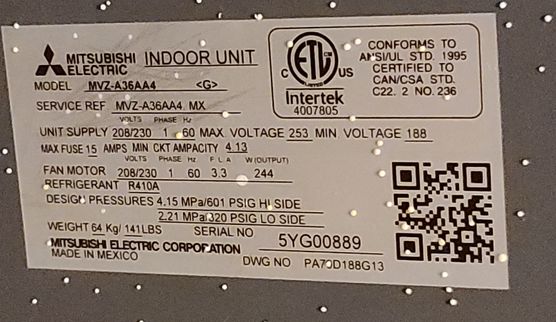
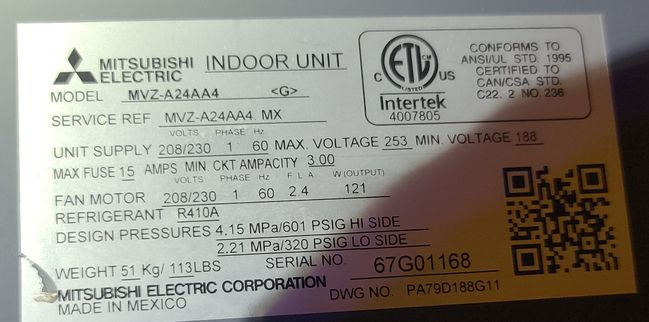
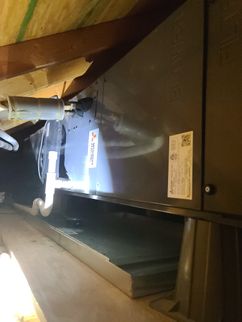
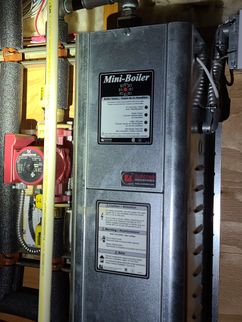

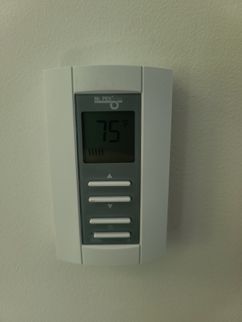

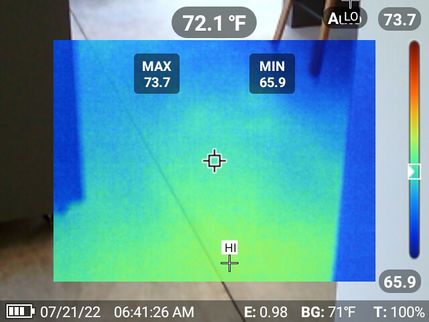

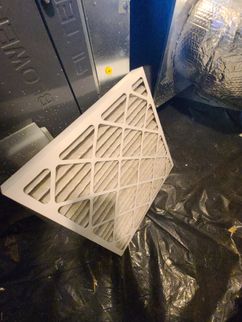





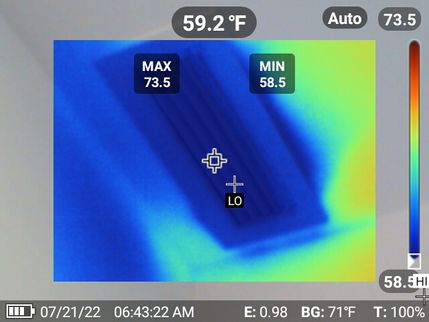
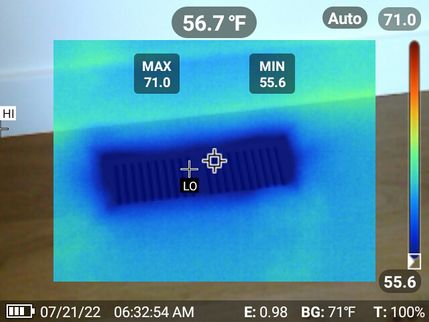
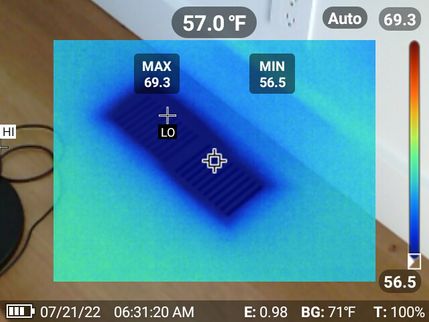
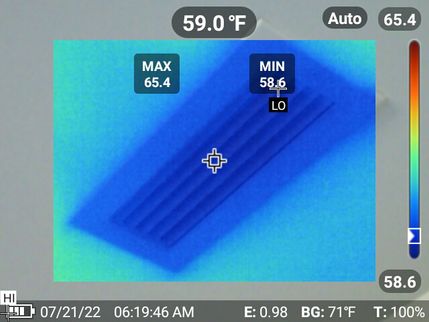
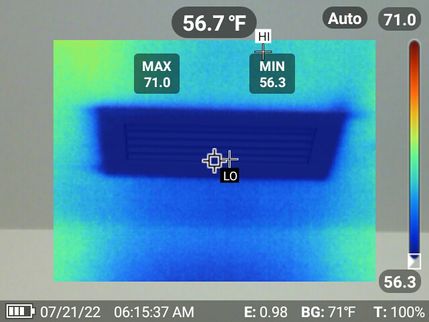


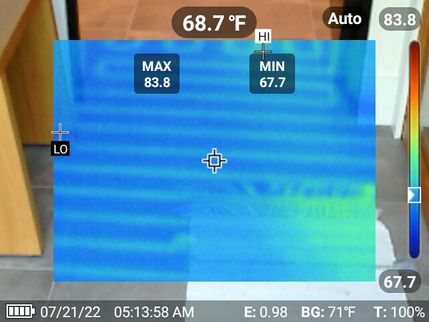
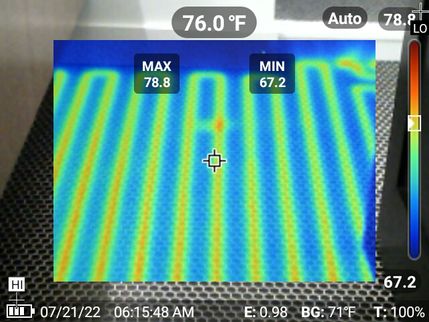

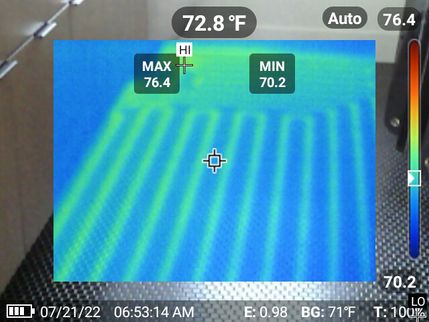


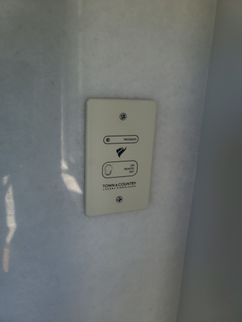
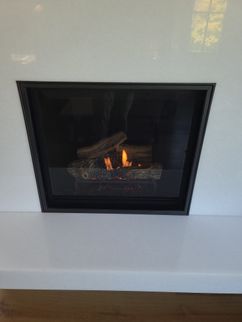
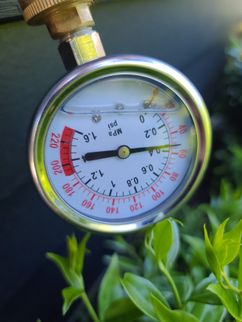

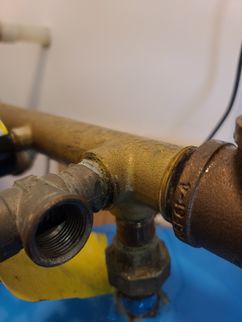
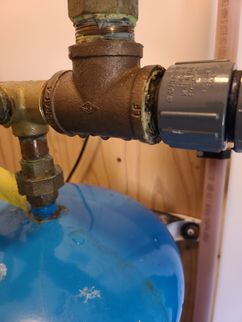
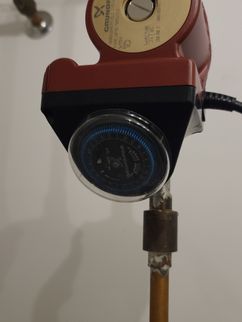
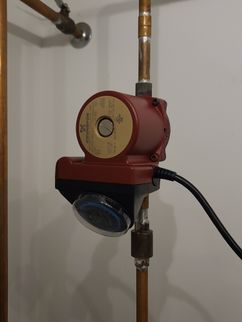
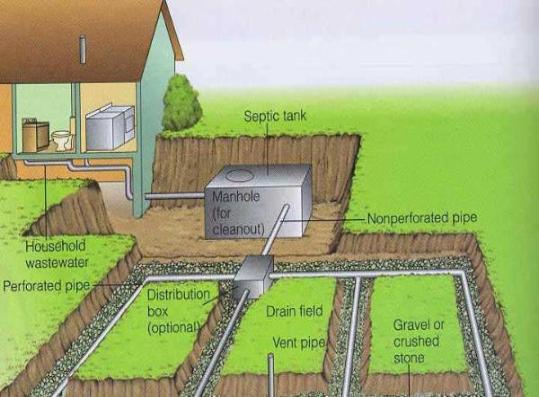
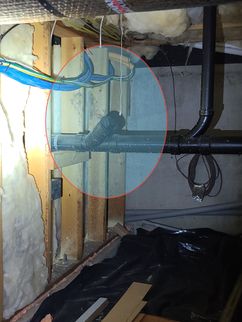
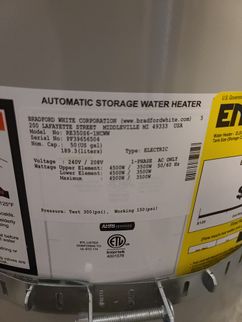
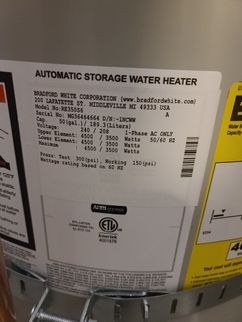
 (1) (1).jpg)
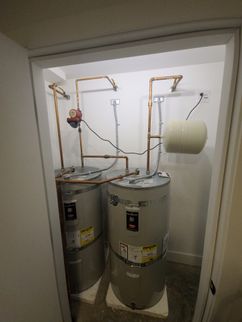
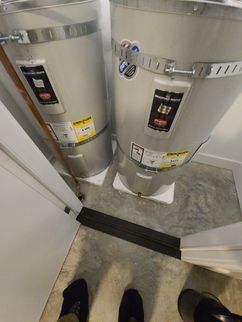
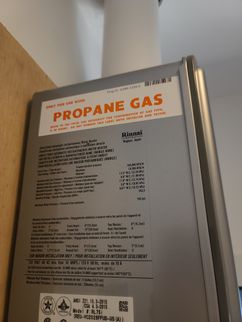
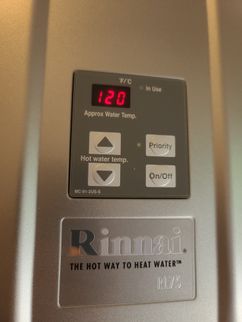
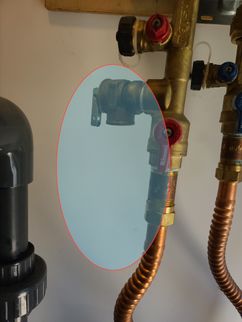
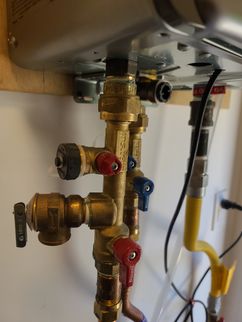

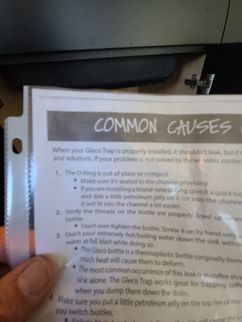
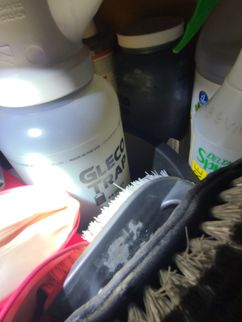
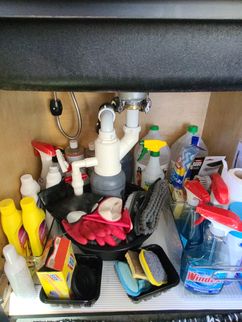
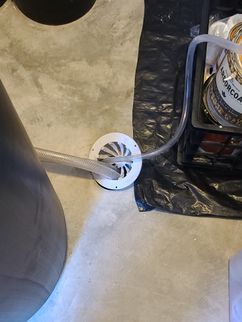
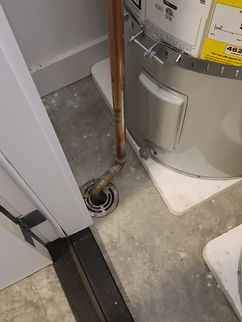

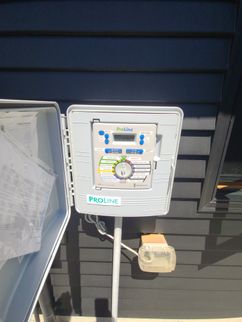
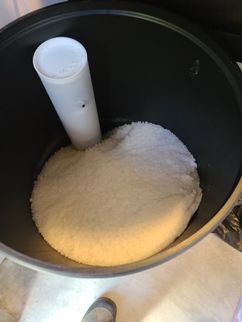
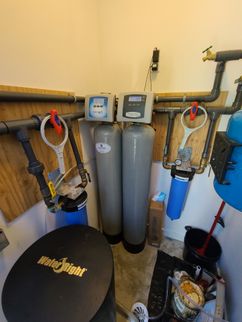
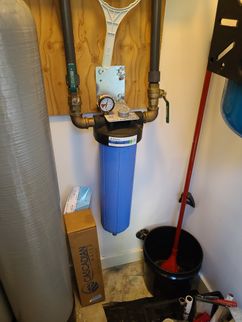
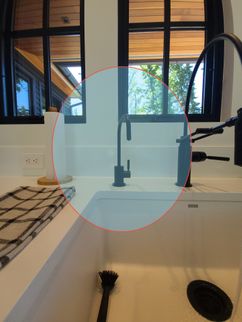
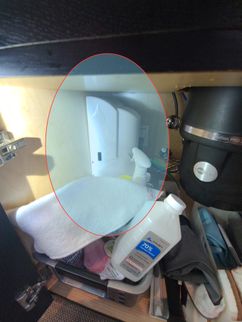
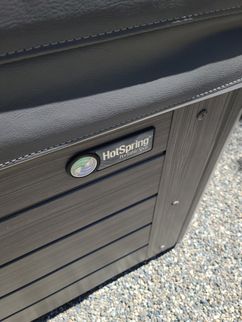
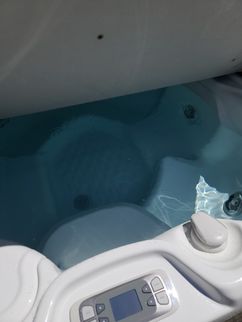
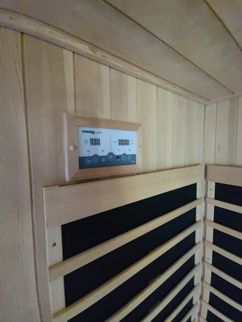
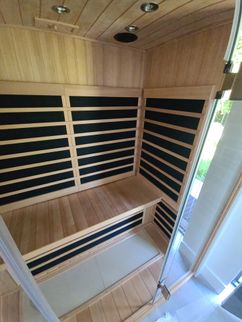


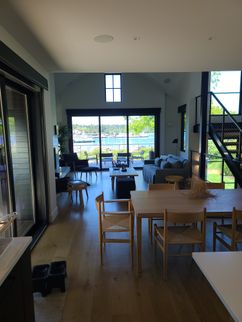
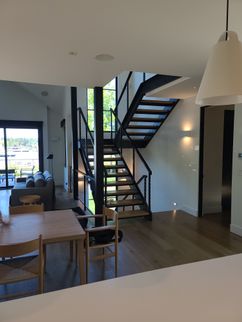
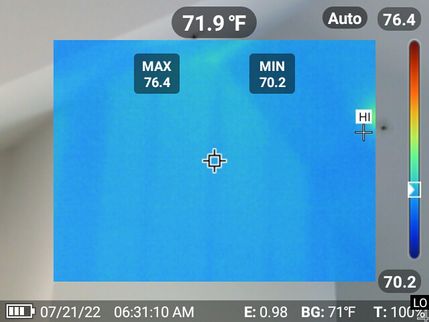
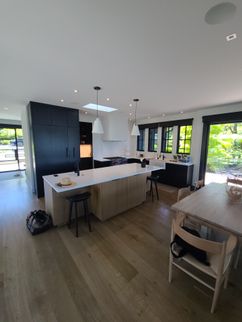


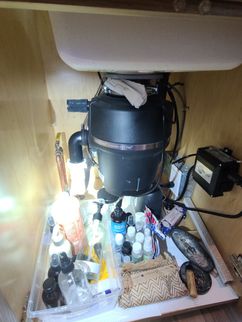


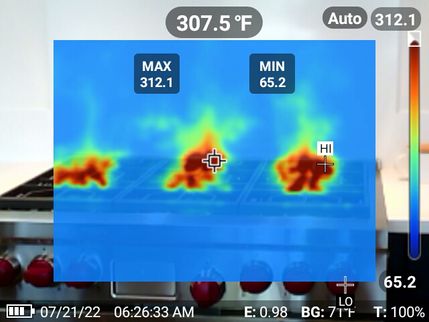
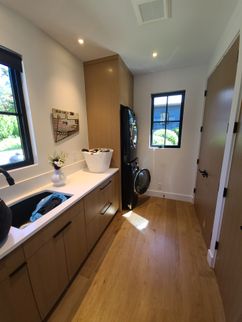
.png)
.png)
